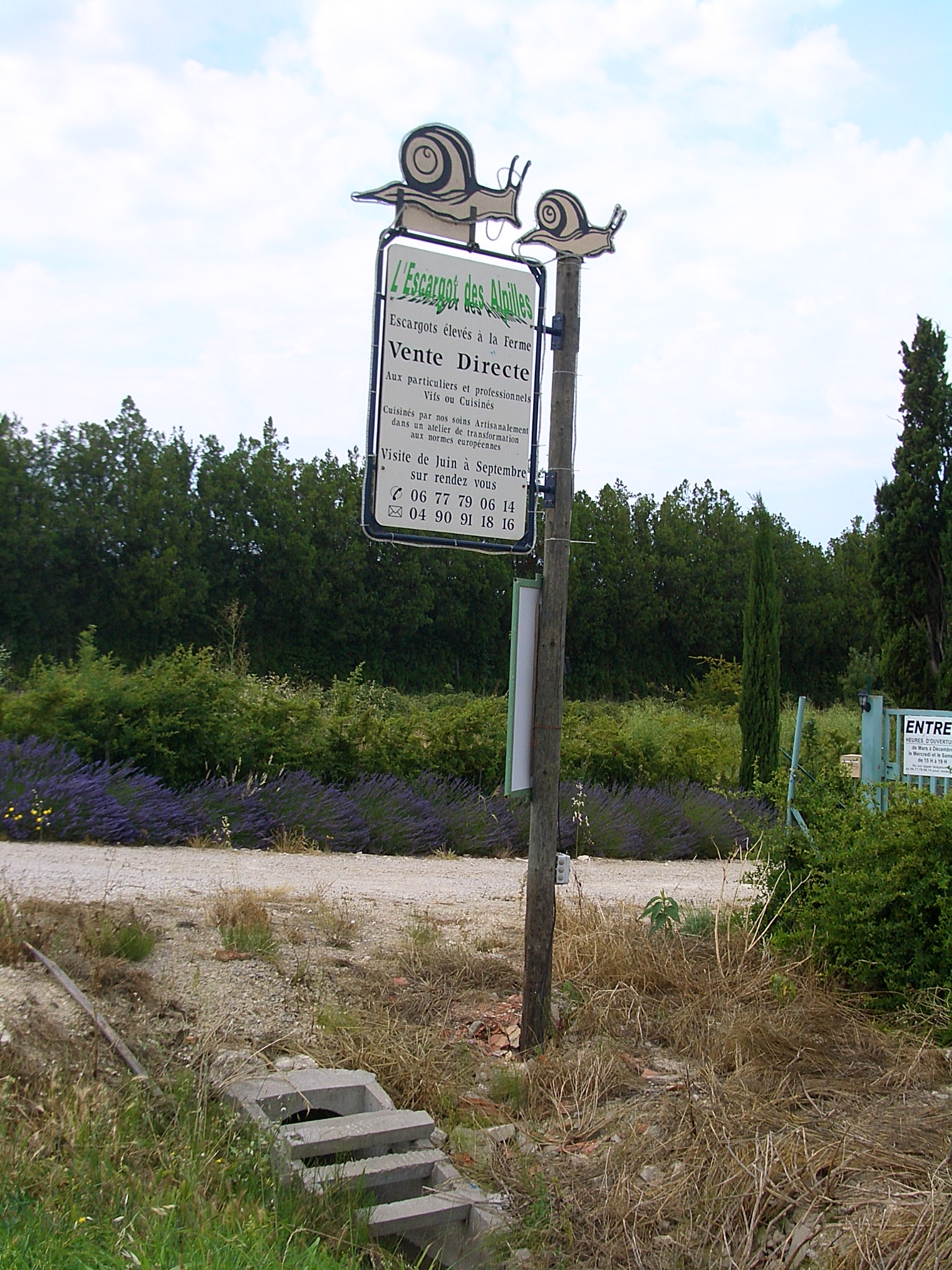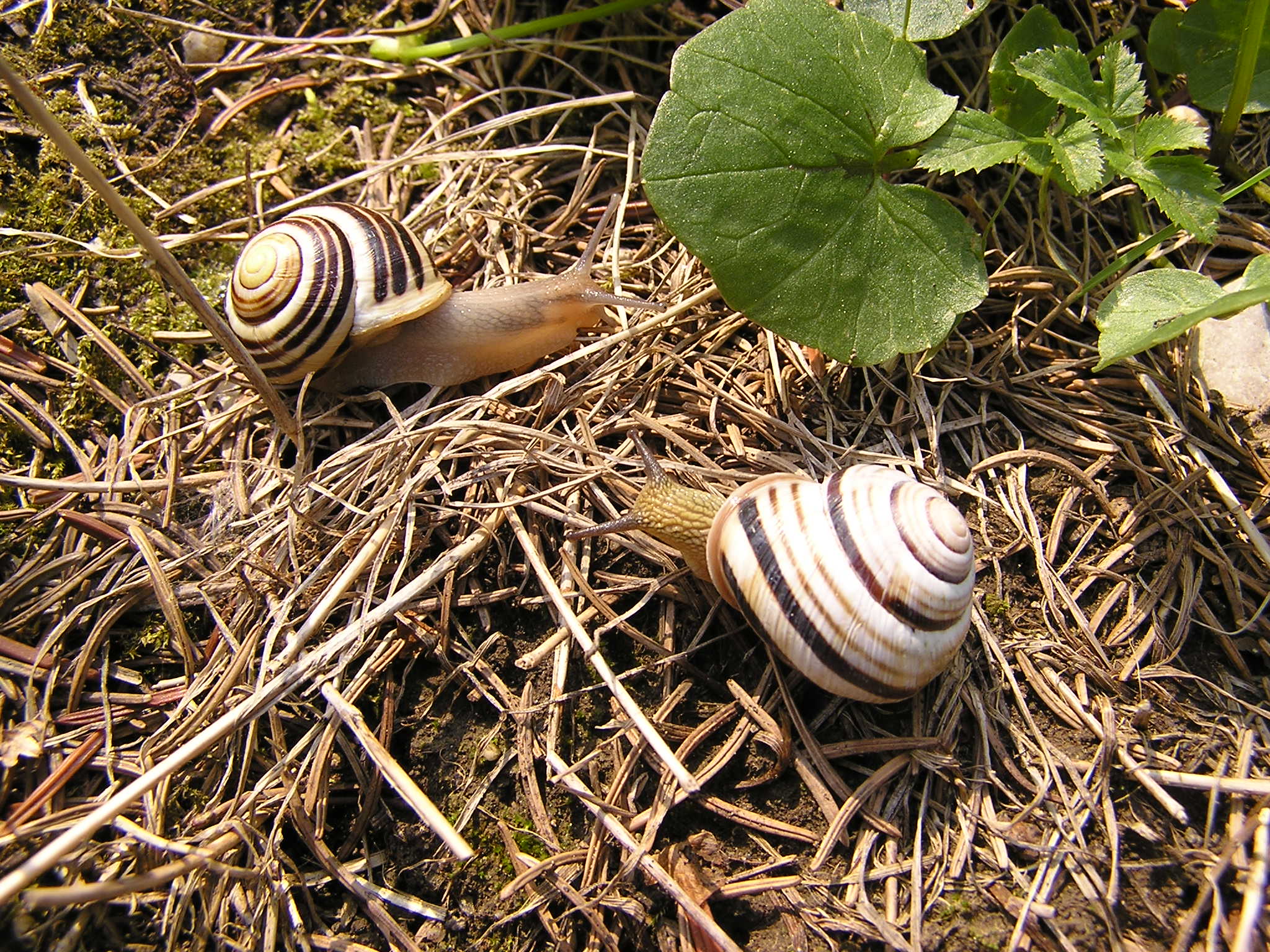|
Heliculture
Heliciculture, commonly known as snail farming, is the process of raising edible land snails, primarily for human consumption or cosmetic use. The meat and snail eggs a.k.a. ''white caviar'' can be consumed as escargot and as a type of caviar, respectively. Perhaps the best-known edible land snail species in the Western world is ''Helix pomatia'', commonly known as the Roman snail or the Burgundy snail. This species, however, is not fit for profitable snail farming, and is normally harvested from nature. Commercial snail farming in the Western world is typically done with ''Cornu aspersum'' (morphotypically divided into ''C. a. aspersa'' and ''C. a. maxima''), formerly known as ''Helix aspersa.'' In tropical climates, snail farming is typically done with the African snail, which biologically does not fall in the family Helicidae, so the meat of which may not be called escargot. History Roasted snail shells have been found in archaeological excavations, an indication that snail ... [...More Info...] [...Related Items...] OR: [Wikipedia] [Google] [Baidu] |
Helix Aspersa
''Cornu aspersum'' (syn. ''Cryptomphalus aspersus''), known by the common name garden snail, is a species of land snail in the family Helicidae, which includes some of the most familiar land snails. Of all terrestrial molluscs, this species may well be the most widely known. It was classified under the name ''Helix aspersa'' for over two centuries, but the prevailing classification now places it in the genus ''Cornu''. The snail is relished as a food item in some areas, but it is also widely regarded as a pest in gardens and in agriculture, especially in regions where it has been introduced accidentally, and where snails are not usually considered to be a menu item. Description The adult bears a hard, thin calcareous shell in diameter and high, with four or five whorls. The shell is variable in coloring and shade of color, but generally it has a reticulated pattern of dark brown, brownish-golden, or chestnut with yellow stripes, flecks, or streaks (characteristically inter ... [...More Info...] [...Related Items...] OR: [Wikipedia] [Google] [Baidu] |
Cornu Aspersum
''Cornu aspersum'' (syn. ''Cryptomphalus aspersus''), known by the common name garden snail, is a species of land snail in the family Helicidae, which includes some of the most familiar land snails. Of all terrestrial molluscs, this species may well be the most widely known. It was classified under the name ''Helix aspersa'' for over two centuries, but the prevailing classification now places it in the genus ''Cornu''. The snail is relished as a food item in some areas, but it is also widely regarded as a pest in gardens and in agriculture, especially in regions where it has been introduced accidentally, and where snails are not usually considered to be a menu item. Description The adult bears a hard, thin calcareous shell in diameter and high, with four or five whorls. The shell is variable in coloring and shade of color, but generally it has a reticulated pattern of dark brown, brownish-golden, or chestnut with yellow stripes, flecks, or streaks (characteristically interr ... [...More Info...] [...Related Items...] OR: [Wikipedia] [Google] [Baidu] |
Otala Lactea
''Otala lactea'', known as the milk snail or Spanish snail, is a large, edible species of air-breathing land snail, a terrestrial pulmonate gastropod mollusk, in the family Helicidae, the typical snails.MolluscaBase eds. (2021). MolluscaBase. Otala lactea (O. F. Müller, 1774). Accessed through: World Register of Marine Species at: http://www.marinespecies.org/aphia.php?p=taxdetails&id=1050532 on 2021-02-14 Archaeological recovery at the Ancient Roman site of Volubilis, in Morocco, illustrates prehistoric exploitation of ''O. lactea'' by humans. Distribution This species of snail is native to the western Mediterranean Basin in the southern Iberian Peninsula, Morocco, Algeria, Balearic and Canary Islands, Malta and Corsica. It has been introduced to the Azores, Madeira, United States, including Arizona, California, Florida, and Texas, and to Bermuda, Cuba, and southeastern Australia. Anatomy This snail creates and uses love darts as part of its courtship behaviour, prior to mat ... [...More Info...] [...Related Items...] OR: [Wikipedia] [Google] [Baidu] |
Cepaea Nemoralis
The grove snail, brown-lipped snail or Lemon snail (''Cepaea nemoralis'') is a species In biology, a species is the basic unit of classification and a taxonomic rank of an organism, as well as a unit of biodiversity. A species is often defined as the largest group of organisms in which any two individuals of the appropriate s ... of air-breathing land snail, a terrestrial molluscs, terrestrial pulmonate gastropod mollusc. MolluscaBase eds. (2020). MolluscaBase. Cepaea nemoralis (Linnaeus, 1758). Accessed through: World Register of Marine Species at: http://marinespecies.org/aphia.php?p=taxdetails&id=235792 on 2020-07-31 It is one of the most common species of land snail in Europe, and has been introduced to North America. ;Subspecies: * ''Cepaea nemoralis etrusca'' (Rossmässler, 1835) * ''Cepaea nemoralis nemoralis'' (Linnaeus, 1758) ''Cepaea nemoralis'' is the type species of the genus ''Cepaea''. It is used as a model organism in citizen science projects. Descriptio ... [...More Info...] [...Related Items...] OR: [Wikipedia] [Google] [Baidu] |
Cepaea Nemoralis Pair Banded Shells
''Cepaea'' is a genus of medium-sized air-breathing land snails, terrestrial pulmonate gastropod mollusks in the family Helicidae. The shells of species within this genus are often brightly colored and patterned with stripes. The two species from this genus, the common and widespread ''C. nemoralis'' and ''C. hortensis'', have been model species for early studies of genetics and natural selection. They occur in Europe, although introduced populations occur elsewhere in the world. Like many Helicidae, this genus of snails create and use love darts. Species For a long time, four species were classified in the genus ''Cepaea''. However, molecular phylogenetic studies suggested that the latter two should be placed in the unrelated genera ''Macularia'' and ''Caucasotachea'': * ''Cepaea hortensis'' (O. F. Müller, 1774) – white-lipped snail or garden banded snail * ''Cepaea nemoralis'' (Linnaeus, 1758) – brown-lipped snail or grove snail * ''Cepaea sylvatica'' (Draparnaud, 1801 ... [...More Info...] [...Related Items...] OR: [Wikipedia] [Google] [Baidu] |
Iberus Alonensis
''Iberus alonensis'' is a species of gastropods belonging to the family Helicidae Helicidae is a large, diverse family of small to large, air-breathing land snails, sometimes called the "typical snails." A number of species in this family are valued as food items, including ''Cornu aspersum'' (formerly ''Helix aspersa'') the b .... The species is found in Spain. References alonensis Gastropods described in 1821 {{Helicidae-stub ... [...More Info...] [...Related Items...] OR: [Wikipedia] [Google] [Baidu] |
Roman Empire
The Roman Empire ( la, Imperium Romanum ; grc-gre, Βασιλεία τῶν Ῥωμαίων, Basileía tôn Rhōmaíōn) was the post-Republican period of ancient Rome. As a polity, it included large territorial holdings around the Mediterranean Sea in Europe, North Africa, and Western Asia, and was ruled by emperors. From the accession of Caesar Augustus as the first Roman emperor to the military anarchy of the 3rd century, it was a Principate with Italia as the metropole of its provinces and the city of Rome as its sole capital. The Empire was later ruled by multiple emperors who shared control over the Western Roman Empire and the Eastern Roman Empire. The city of Rome remained the nominal capital of both parts until AD 476 when the imperial insignia were sent to Constantinople following the capture of the Western capital of Ravenna by the Germanic barbarians. The adoption of Christianity as the state church of the Roman Empire in AD 380 and the fall of the Western ... [...More Info...] [...Related Items...] OR: [Wikipedia] [Google] [Baidu] |
Canning
Canning is a method of food preservation in which food is processed and sealed in an airtight container (jars like Mason jars, and steel and tin cans). Canning provides a shelf life that typically ranges from one to five years, although under specific circumstances, it can be much longer. A freeze-dried canned product, such as canned dried lentils, could last as long as 30 years in an edible state. In 1974, samples of canned food from the wreck of the ''Bertrand'', a steamboat that sank in the Missouri River in 1865, were tested by the National Food Processors Association. Although appearance, smell, and vitamin content had deteriorated, there was no trace of microbial growth and the 109-year-old food was determined to be still safe to eat. History and development French origins During the first years of the Napoleonic Wars, the French government offered a hefty cash award of 12,000 francs to any inventor who could devise a cheap and effective method of preserving l ... [...More Info...] [...Related Items...] OR: [Wikipedia] [Google] [Baidu] |
Lissachatina Fulica
''Lissachatina fulica'' is a species of large land snail that belongs in the subfamily Achatininae of the family Achatinidae. It is also known as the Giant African land snail.''Achatina fulica''. Global Invasive Species Database. ISSG. IUCN. It shares the common name "giant African snail" with other species of snails such as '' Achatina achatina'' and ''''. This snail species has been considered a significant cause of pest issues around the world. Internationally, it is the most frequently occurring invasive species of snail. Outside of its native range, this snail th ... [...More Info...] [...Related Items...] OR: [Wikipedia] [Google] [Baidu] |
Agricultural Research Service
The Agricultural Research Service (ARS) is the principal in-house research agency of the United States Department of Agriculture (USDA). ARS is one of four agencies in USDA's Research, Education and Economics mission area. ARS is charged with extending the nation's scientific knowledge and solving agricultural problems through its four national program areas: nutrition, food safety and quality; animal production and protection; natural resources and sustainable agricultural systems; and crop production and protection. ARS research focuses on solving problems affecting Americans every day. The ARS Headquarters is located in the Jamie L. Whitten Building on Independence Avenue in Washington, D.C. and the headquarters staff is located at the George Washington Carver Center (GWCC) in Beltsville, Maryland. For 2018, its budget was $1.2 billion. Mission ARS conducts scientific research for the American public. Their main focus is on research to develop solutions to agricultural pr ... [...More Info...] [...Related Items...] OR: [Wikipedia] [Google] [Baidu] |









